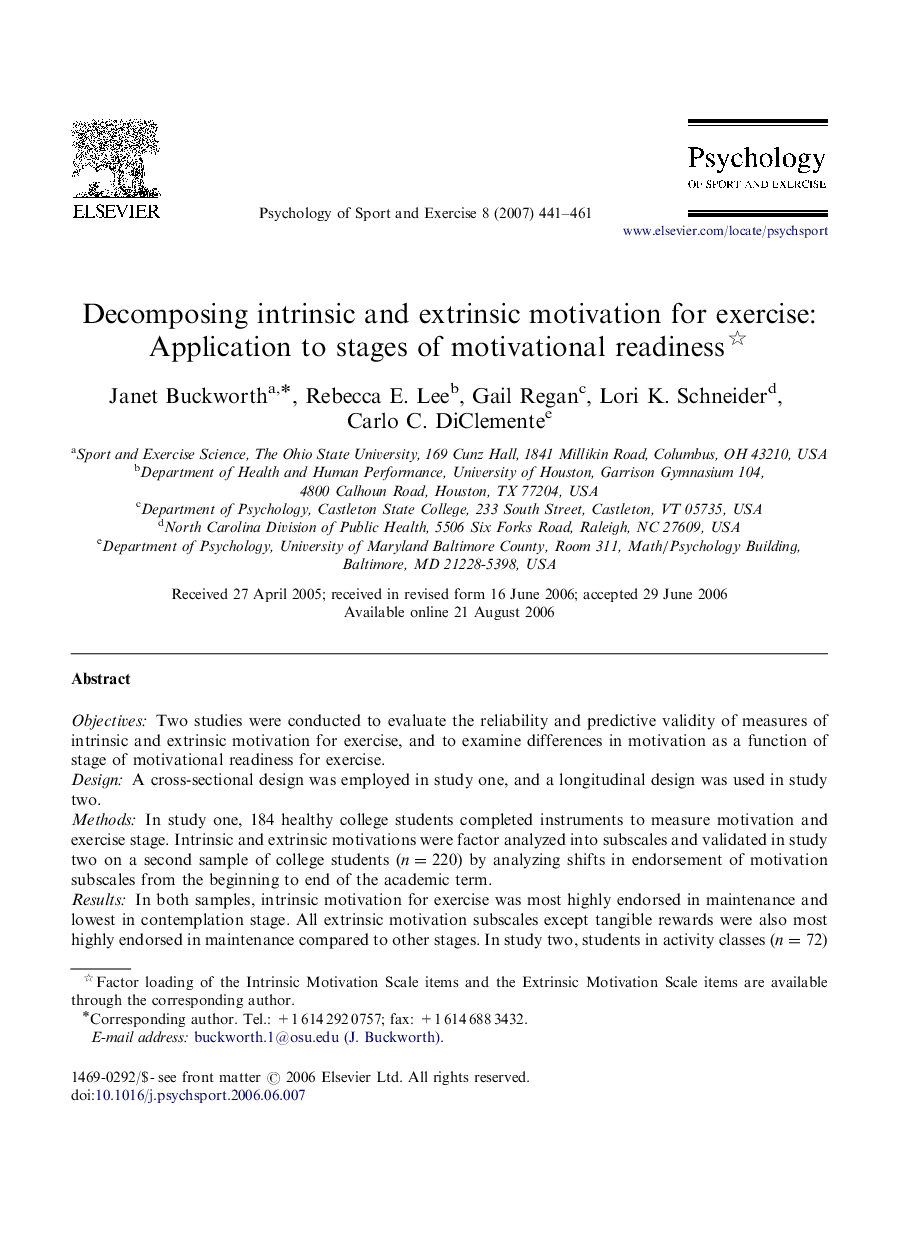| Article ID | Journal | Published Year | Pages | File Type |
|---|---|---|---|---|
| 894902 | Psychology of Sport and Exercise | 2007 | 21 Pages |
ObjectivesTwo studies were conducted to evaluate the reliability and predictive validity of measures of intrinsic and extrinsic motivation for exercise, and to examine differences in motivation as a function of stage of motivational readiness for exercise.DesignA cross-sectional design was employed in study one, and a longitudinal design was used in study two.MethodsIn study one, 184 healthy college students completed instruments to measure motivation and exercise stage. Intrinsic and extrinsic motivations were factor analyzed into subscales and validated in study two on a second sample of college students (n=220) by analyzing shifts in endorsement of motivation subscales from the beginning to end of the academic term.ResultsIn both samples, intrinsic motivation for exercise was most highly endorsed in maintenance and lowest in contemplation stage. All extrinsic motivation subscales except tangible rewards were also most highly endorsed in maintenance compared to other stages. In study two, students in activity classes (n=72) endorsed both intrinsic and extrinsic motivation more than those in lecture classes (n=70). Relative to patterns of physical activity, intrinsic motivation was greater than extrinsic motivation for the continually active group, and decreased for the continually inactive group. Exercise maintenance was fostered by greater intrinsic relative to extrinsic motivation.ConclusionIntrinsic and extrinsic motivation can be decomposed into meaningful subfactors that are differentially related to exercise adoption and maintenance.
